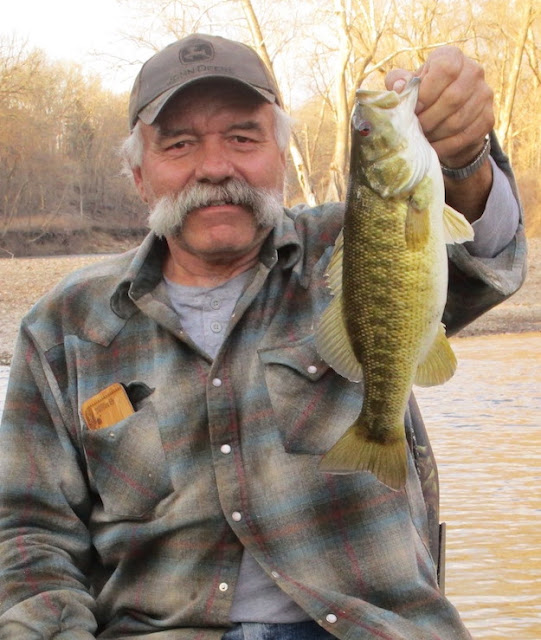“ I ain’t never seen nothin’ like this”, I heard one old timer say when it was raining for so many days last week. I have said the exact same thing several times the last couple of years or so. You have to start getting some age on you to say that effectively. I never, ever said that when I was 25 or 30 years old. When I was that age, about everything that happened was a fairly new experience. But now that I am older, I remember seeing a lot of things happen related to the weather and nature, which causes me to say, “I ain’t never seen anything like this.”
Uncle Norten, who was eighty-four years old at the time, recalled when he was only about ten years old or so in the spring of 1933 that it rained five days straight and the Big Piney River where he lived. It rose to the highest point anyone had ever seen. He said he remembered older folks going around saying, “I ain’t never seen nothin’ like this.”
“We had built a little log cabin up on the hillside above the river, not far from a nice spring,” he recalled. “ I had helped Pop cut the logs and build the place, even though I was awfully small. I did a lot of mud hauling. We filled the cracks between the logs with red clay from a mud bank not far away, and I think Pop intended to eventually build a floor in it, but we never did. We just hauled in sawdust from a nearby sawmill, and the floor was always sawdust, until we moved out two or three years later to a little broken-down house up the river. But we’d change the sawdust ever so often, so as to keep things as clean as possible.”
Norten told me that what he remembered about that deluge in 1933 was that it rained so hard and the wind was so strong at times, that it washed away the clay mud chinking on the west side of the cabin and started blowing rain in through the cracks. He said that for awhile the sawdust was floating in water on that side of the cabin. Fortunately, the oak shingles didn’t leak, and so their beds in the attic stayed dry. Those beds consisted of makeshift mattresses filled with duck feathers. It was a lot better life than the first Ozark settlers had enjoyed, when they had to live primitively out of wagons that brought them there.
My uncle said that eventually the rain ended, the sun shined, the river fell and life returned to normal. Then they just had the heat of July to contend with… and the coming depression. For him the depression was no problem. There in the hills, times didn’t get much worse than they had been, just because the stock market crashed.
Hard times and floods don’t affect me much. I live on a remote country ridge-top far from civilization. My place is not prone to flooding, and so far, free from tornadoes, knock on wood. The ice storm hit pretty hard here, though, a few years back. I ain’t never seen nothing like that!
I think that for those in huge cities, some worse times than we have ever seen are coming, sooner or later. Those who mass together in a world of concrete and pavement and glass and computers are already trying to find places to escape to, like the Ozarks. I am not one of those global warming nuts…I have no scientific evidence to call upon to help me predict the future course nature might take, and I don’t know for sure what is coming. But I am fairly sure that worse is coming. It is the consequence of huge, ever-increasing numbers of people, and the idea that the lifeboat will hold everybody while the country sinks from too many people. It is the problem of man not realizing that there can be too many people, not knowing that the earth is, after all, the boss…and man is not. I am convinced that it isn’t the climate changing that we should worry about. IT IS THE CHANGE IN PEOPLE!
But one thing for sure, there is no turning around; there is no changing the course. We are going wherever we are going, and good or bad, global warming, global cooling, or global chaos, ….it is coming eventually. Some things a man can’t do a thing about. When a massive black cloud forms on the horizon, you just can’t change the course or the power of the impending storm. Not even with a computer! My guess there will be more old timers sitting around and saying, “I ain’t never seen nothin’ like this.” Until there aren’t any old timers left!
There is one thing that gives me a good feeling. I know a place or two where the woods are deep and the trees are big, and the spring water is still clean. There are squirrels there and fish in the river below and blackberries grow in the summer just like they did when uncle Norten was a boy. There’s a cave there to protect a man from wind and ice alike. Inside, the temperature stays around 60 degrees year-round regardless of what it may be outside. If times get too hard, I intend to take my Labrador and my television and a good sleeping bag with some matches, fishing gear and shotgun, pack it all in my johnboat, and float down to that peaceful little valley. In the meantime, I am going fishing this week… a whole lot… when the river goes down!
Write to me at Box 22, Bolivar, Mo. 65613, or e-mail me at lightninridge47@gmail.com




